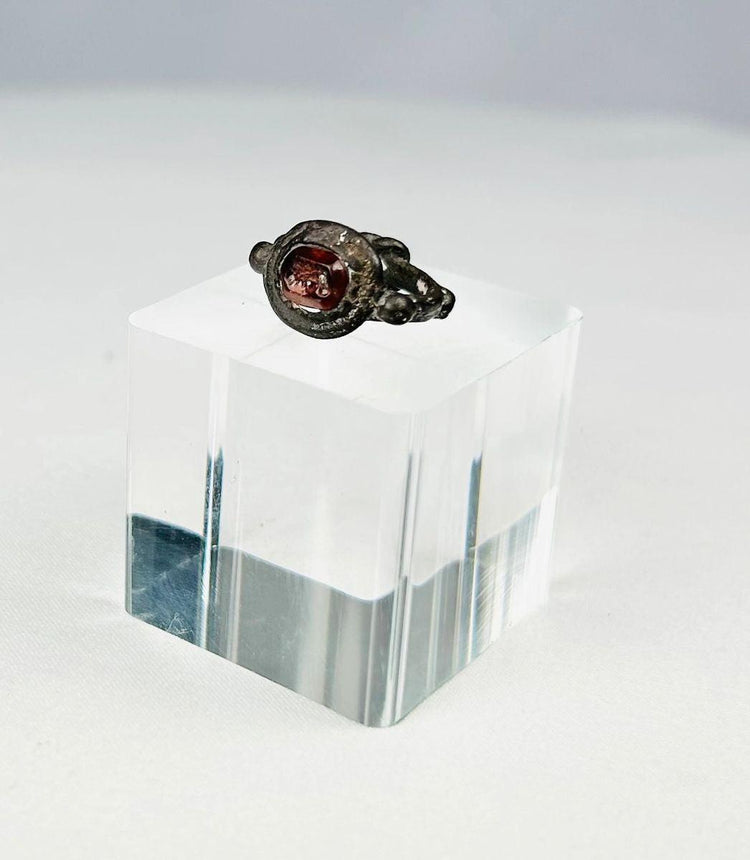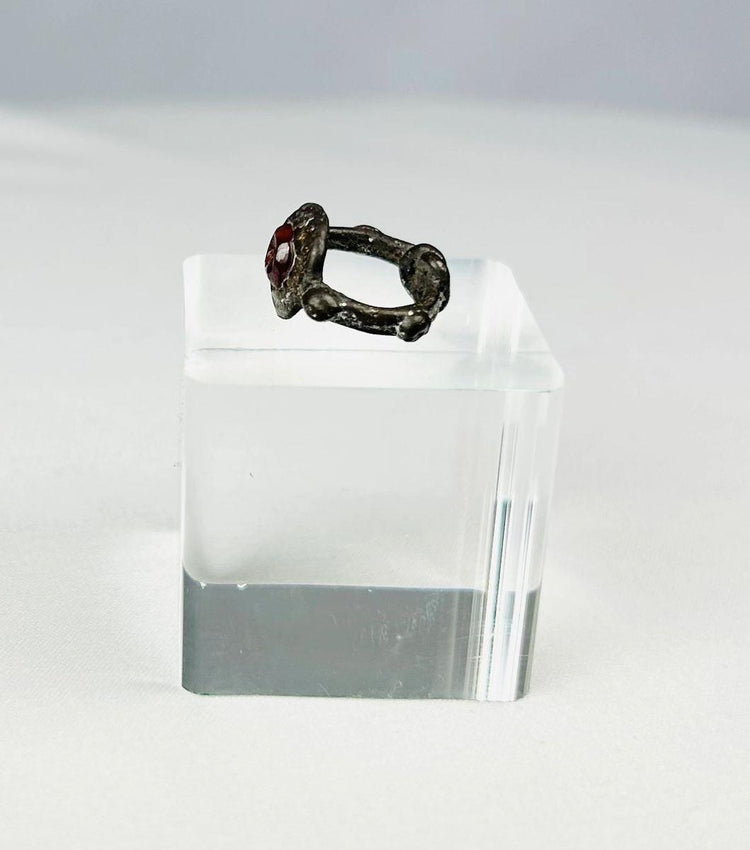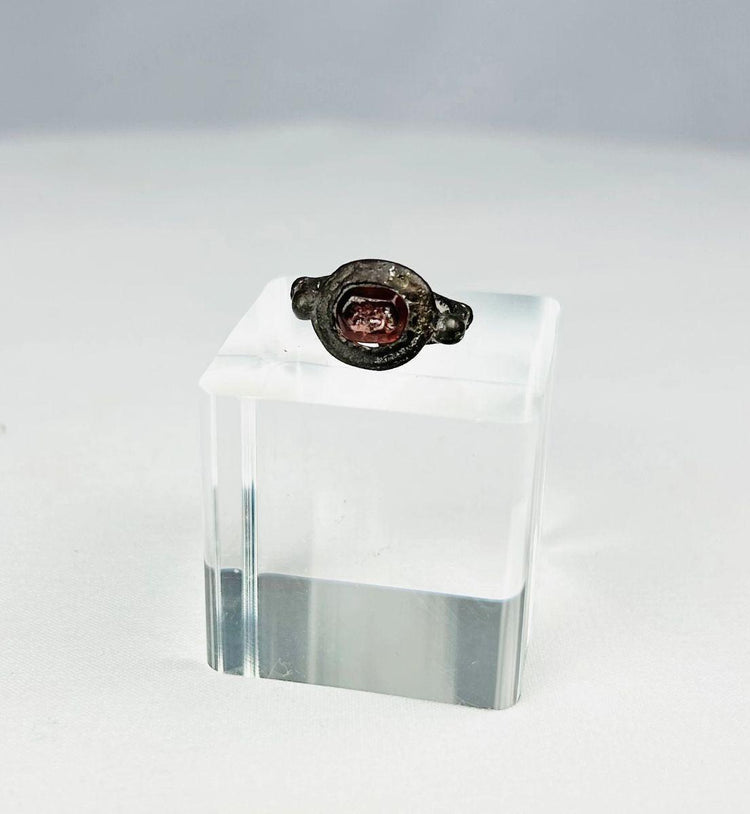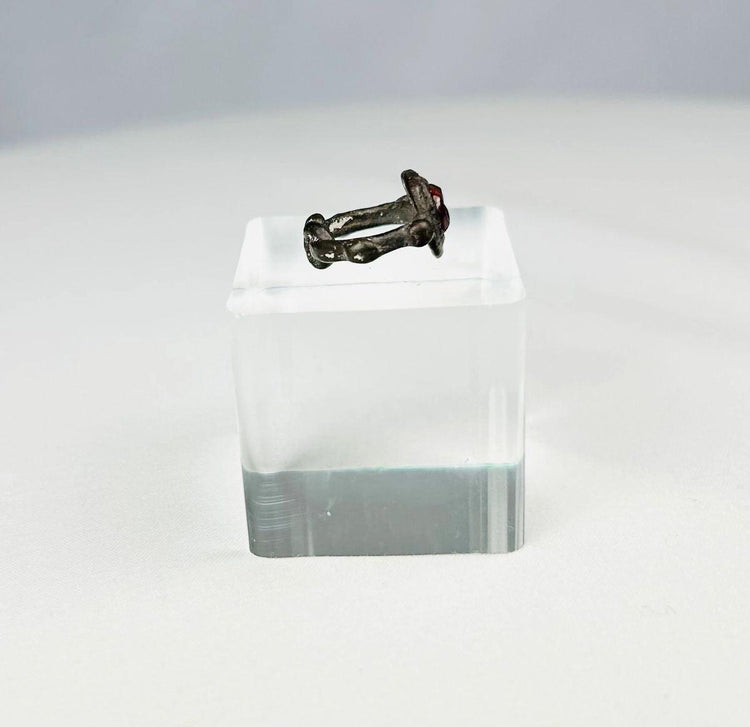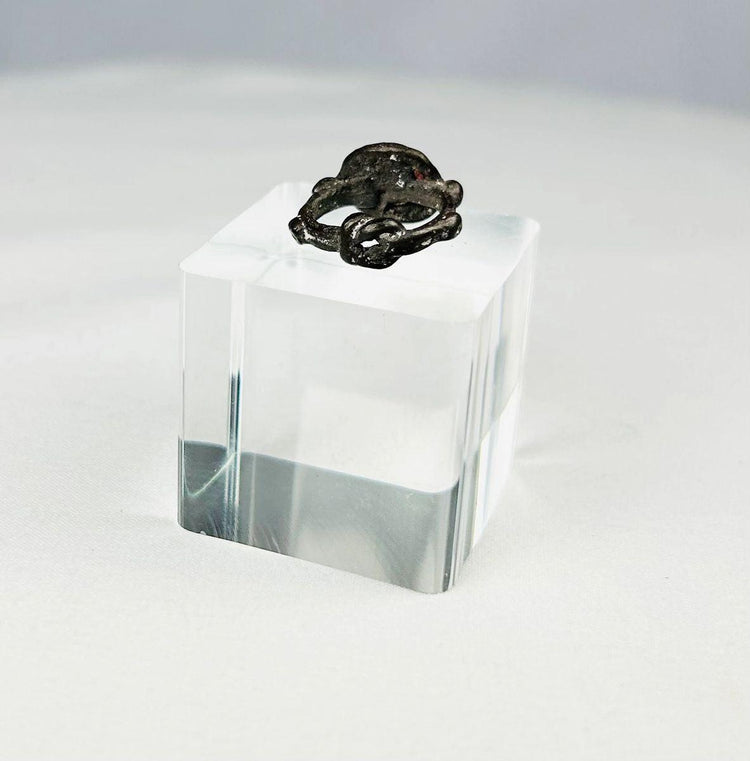Bague ancienne en argent et grenat | Bague intaille | Vers 300–600 apr. J.-C.
Description
Plus
Moins
Contexte historique et origine
Région : Méditerranée orientale ou Proche-Orient
Matière : Argent avec intaille en grenat
Période : de la fin de l'époque romaine au début de l'époque byzantine, vers 300-600 apr. J.-C.
Description
Cette extraordinaire bague ancienne en argent illustre le savoir-faire et l'artisanat de l'Antiquité. Sertie d'une intaille en grenat rouge profond, la lunette est finement gravée d'un motif complexe, peut-être symbolique ou personnel. Les bagues de ce type étaient souvent utilisées à la fois comme ornements personnels et comme sceaux, incarnant le double rôle de statut et de fonction dans les sociétés romaines tardives et byzantines.
Caractéristiques
- Intaille en grenat rouge foncé gravée d'images symboliques ou personnelles
- Nœuds décoratifs en argent flanquant la lunette surélevée, rehaussant son élégance
- Le grenat conserve sa brillance et sa surface polie malgré l'âge
- Fabriqué à la fois comme un sceau et un ornement de statut social élevé
Importance culturelle
Les grenats étaient très prisés dans l'Antiquité, symbolisant protection, force et passion. Les bagues en intaille servaient à la fois de sceaux personnels pour les documents et d'expressions d'identité, d'autorité ou de croyances spirituelles. Cette pièce appartenait probablement à un membre de l'élite romaine ou byzantine, ce qui souligne son importance comme symbole de rang et d'influence.
Condition
Très bon état, avec une patine argentée naturelle et une légère usure superficielle de la pierre précieuse, témoignant d'un usage séculaire. L'intaille gravée reste clairement visible, préservant ainsi sa signification symbolique.
Dimensions (approximatives)
Taille de la bague : 1 US
Âge
De la fin de l'époque romaine au début de l'époque byzantine, vers 300-600 apr. J.-C.
Description
Contexte historique et origine
Région : Méditerranée orientale ou Proche-Orient
Matière : Argent avec intaille en grenat
Période : de la fin de l'époque romaine au début de l'époque byzantine, vers 300-600 apr. J.-C.
Description
Cette extraordinaire bague ancienne en argent illustre le savoir-faire et l'artisanat de l'Antiquité. Sertie d'une intaille en grenat rouge profond, la lunette est finement gravée d'un motif complexe, peut-être symbolique ou personnel. Les bagues de ce type étaient souvent utilisées à la fois comme ornements personnels et comme sceaux, incarnant le double rôle de statut et de fonction dans les sociétés romaines tardives et byzantines.
Caractéristiques
- Intaille en grenat rouge foncé gravée d'images symboliques ou personnelles
- Nœuds décoratifs en argent flanquant la lunette surélevée, rehaussant son élégance
- Le grenat conserve sa brillance et sa surface polie malgré l'âge
- Fabriqué à la fois comme un sceau et un ornement de statut social élevé
Importance culturelle
Les grenats étaient très prisés dans l'Antiquité, symbolisant protection, force et passion. Les bagues en intaille servaient à la fois de sceaux personnels pour les documents et d'expressions d'identité, d'autorité ou de croyances spirituelles. Cette pièce appartenait probablement à un membre de l'élite romaine ou byzantine, ce qui souligne son importance comme symbole de rang et d'influence.
Condition
Très bon état, avec une patine argentée naturelle et une légère usure superficielle de la pierre précieuse, témoignant d'un usage séculaire. L'intaille gravée reste clairement visible, préservant ainsi sa signification symbolique.
Dimensions (approximatives)
Taille de la bague : 1 US
Âge
De la fin de l'époque romaine au début de l'époque byzantine, vers 300-600 apr. J.-C.
Vous aimerez peut-être aussi






















